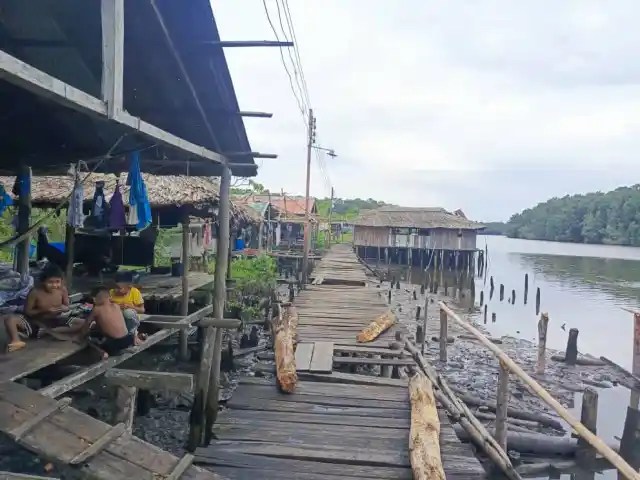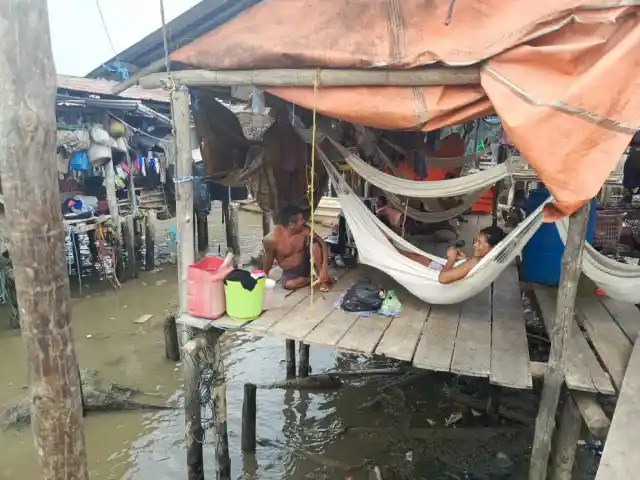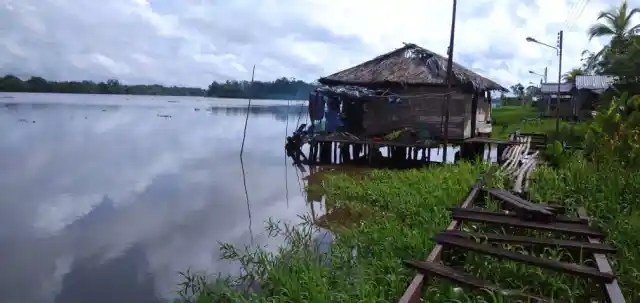
The Warao who live yn the Orinoco River delta have been practically left to their own devices in recent years, despite the fact that the Chavista regime boasts of recognizing indigenous ethnicities and giving visibility to the indigenous peoples. These communities in the remote Delta Amacuro State, in the extreme east of the country, do not escape the abandonment and apathy of those who should guarantee them a better quality of life.
Jefferson Civira // Correspondent lapatilla.com
Afflicted by diseases that have been eradicated in other countries for several decades and had already been eradicated here, but that in Venezuela have returned as a result the lack of effective healthcare policies. The Warao people see death up close, whether from illnesses such as tuberculosis, malaria and HIV.
Receiving medical attention can be a true odyssey for anyone suffering from any of these diseases, since as is known, healthcare centers lack all types of supplies and treatments, coupled with the very deteriorated infrastructure.
The death of more than 20 children between the ages of 4 and 12 due to a strange disease raised alarm bells in the Delta Amacuro population, especially in the indigenous communities of Sakoinoko, Yorinanoko and Mukoboina. Although the symptoms in the infants were similar, such as fever, head and neck pain, convulsions and chest congestion, and even though the deaths occurred last April, so far, the disease that could have caused the illness remains a mystery.
State apathy

Abraham Marquina Sucre, who is a resident of the Warao Bonoina indigenous community, located in the heart of the jungle in the Manuel Renaud Parish, Antonio Díaz Municipality, in the eastern part of Delta Amacuro, says that in the different communities there are many diseases that have been decimating the population. He assures that tuberculosis or TBC, as it is commonly known, is a consequence of the poor diet of the aborigines.
Other diseases are caused by the lack of drinking water, mainly in the most remote areas, which forces people to drink water from contaminated rivers, causing diarrhea, dehydration and other gastrointestinal conditions. Although they are pathologies that are easy to control if adequate treatment is applied, Marquina Sucre affirms that people die because they cannot find antidiarrheal medications or oral hydrating solutions, for example.
This resident of the community explains that the Bonoina community is eight hours away by canoe (a native people’s boat) from Tucupita, the capital of the Delta Amacuro State, which makes it difficult to transport a sick person to this city.
“The absence of governance is very great in our state. We are in bad shape due to lack of medicines, over there (in the community) we need a lot of medicines and that is why our people are dying. From January until now (end of May) we have counted more than 50 adults for diseases that could have easily been treated, imagine the children, more than 30. We are already reaching almost 100 sick between adults and children, from all the communities of the lower delta, all due to lack of medical care,” lamented Marquina Sucre.
He adds that in the Bonoina indigenous community there are 560 people registered sick, of which a significant number of deaths have been recorded in the first five months of the year due to various diseases. Although there are outpatient clinics, these do not have the supplies required to care for the population, much less laboratories to perform any tests and know what disease the patient may suffer from.
Even patients who are transferred from remote communities to the Luis Razetti hospital in Tucupita die because this healthcare center does not have the necessary supplies, denounces the indigenous social fighter. Since they do not have medicines, they ask their relatives to look for them at pharmacies, but as these are people with very low resources and income, they cannot purchase them, and in many cases they must appeal to organizations such as Cáritas or the Consolata missionaries.
A painful journey

Local journalist Melquiades Ávila, who is a member of the Warao community, recounts the follow-up he has done on the entire situation of the precarious healthcare system in this eastern region of the country, specifically the indigenous area.
He points out that the indigenous peoples are under a emergency context caused by the lack of primary care suffered by the inhabitants of the approximately 320 indigenous communities that exist in this State.
He says that the rural dispensaries, which used to serve the sick who came at any time of the day, disappeared about 10 years ago. Only in very specific communities (four or five) have the Cuban doctors with whom the Chavista regime has agreements remained. However, most of these areas have been left unattended in terms of healthcare.
“In these communities what is clearly evident is the absence of primary care, there are not even paramedical personnel to care of the Waraos and their children in case of some endemic diseases. Added to this is the lack of effective transportation means to transport a patient to a healthcare center where there could be some medicine,” says Ávila.
The social communicator explains that, given the geographical characteristics of this state, the type of transportation that is most used is the ‘canalete’ or ‘curiara’ canoe types. Depending on the community, the journey to get to the capital city can last between six and 10 hours. But in some other cases, from the most distant areas, it may take up to five or six days because it is slow since there is no gasoline or engines to speed up the trips.
“The fundamental problem is that people are forced to move rowing and and sailing. Unfortunately, the oar is what is most commonly used, going back to the old days, when engines did not exist, which are currently not used because there is no fuel. When they travel, they take five or six days and have to face hunger, lack of sleep, the sun, the rain, all those calamities because there is no other way but to paddle up the Orinoco river to get to Tucupita,” says the journalist.
Although there are no figures about the percentage by which these diseases have increased due to the authorities’ reluctance to make them known, he assures that tuberculosis “has skyrocketed” at an alarming rate. Even in the Tucupita hospital itself, he points out that there are many cases of this infectious disease.
Chronic diseases such as HIV have had a significant rebound. However, there is no official statement, nor does the Venezuelan State follow up on it.
“HIV AIDS infection has an alarming incidence in some Warao communities. There is a spot, a source of contamination, called San Francisco de Wayo in the Antonio Díaz Municipality. This population is being wiped out by this disease and since it is a large community, it infects the entire surrounding area where there are between 20 and 30 affected communities, and the Government does not want to recognize this,” said Ávila.
Background of the strange disease

This is not the first time that multiple deaths have occurred due to a “rare disease.” In 2018, at least 39 people died as a result of a “strange disease”, which although at the time it was said that its origin would be investigated, six years later it is not known what caused it.
For both the 2018 deaths and those that occurred more recently, healthcare authorities extracted blood samples that were sent to the city of Caracas for laboratory testing. In the case of the samples taken last April, the Chavista governor, Lizeta Hernández, announced at that time that they had tested negative for pathologies such as dengue, tuberculosis, malaria, chikungunya, meningitis and pneumococcus.
Given the proximity to Bolívar State and the Essequibo territory malaria is a febrile disease that is rampant in the Orinoco Delta. Many indigenous people go to work in the mines and return to their communities infected with the disease, but due to the lack of treatment, the condition of the sick person worsens and they die.
Fleeing from death
On its website, Consolata América, a network of missionaries present in 33 countries around the world, published that despite the statement by the Chavista governor, Lizeta Hernández, in which she stated that “the situation was controlled,” information received by Families from the Mukoboina and Jokorinoko communities reported that the “rare disease” continued to kill people.
In mid-April of this year, Father Andrés García thanked the “governmental efforts” in which a hospital ship called “La Barcaza” was sent with a team of epidemiological doctors, in order to make a diagnosis and stop the pathology that has caused the deaths.
Although doctors reported little about the “rare disease,” it was unofficially known that the cause of the deaths was due to a strain of meningitis. This situation forced families from the Mukoboina and Jokorinoko communities to move again, fleeing disease and death.
Meanwhile, the inhabitants of these communities, as well as the humanitarian organizations that work in these territories, continue waiting to know for sure what disease caused the more than 20 deaths between the months of March and April. The only certainty that exists is the fear that another wave of infections could occur.

